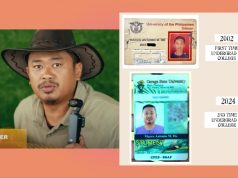
MANILA, PHILIPPINES — A recent survey by Microsoft showed that a majority of business leaders across the Asian region agreed on the need to transform into a digital business to enable growth in the future.
The study was recently done across 13 markets in Asia with a high 87% of business leaders from the education sector have similar opinions that every organization, including educational institutions, on the importance on digital transformation.
The study is also paramount to the Philippines, according to a statement from Microsoft Philippines, in “[a] country with 25.4 million K-12 learners and a fast growing economy”. Technology, said the software technology giant, should be used “[to] engage all learners and prepare them for the future”.
Bertrand Launay, the newly-installed managing director of Microsoft Philippines, reiterates Microsoft’s firm commitment to the digital transformation of education in the Philippines.
“We at Microsoft create technology that recognizes the diversity in learning and we have created tools that empower all students,” Launay said.
Microsoft video shows an example of how technology can empower students with special needs
When it come to helping students with special needs, Microsoft has launched a video that shows one example of Microsoft’s commitment to inclusive learning, wherein the video focuses on technology for the visually impaired.
The video shows students from the Adaptive Technology for Rehabilitation, Integration and Empowerment of the Visually Impaired (ATRIEV), and shows how visually impaired learners can gain important computer science skills that will help increase their employability opportunities. Accessibility tools and assistive technology tools such as audio Narrator were utilized in order for the students to use basic office productivity tools and even computer programming and coding.
“This is a game-changer in the field of education,” said Clarissa Segismundo, Education Programs lead at Microsoft Philippines. “These are tools that many special students are using for inclusive-learning in the classroom.”
In 2016, the Department of Education (DepEd) registered 250,000 enrollees at the elementary level and 100,000 at the high school level students with special needs.
ATRIEV, on the other hand, is an NGO partnered with Microsoft Youthspark’s Coding for Accessibility since 2008 and continued to help the blind and low vision be employable.
“This is but one example of the many Microsoft learning tools created for learners with special needs,” Launay said. “As evident in our programs and accessibility features that are present in all our software solutions, we remain steadfast in being the technology behind quality and inclusive education for all.”









